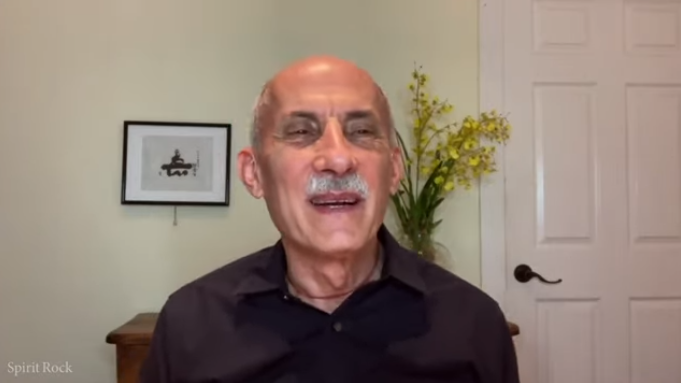Restraint serves as a counterbalance to the addictive tendencies of mind. There is a story in the Buddhist texts of a monkey living happily and freely in a forest on the high mountains. One day he became curious about what it was like on the plains, so he went down to explore. Some hunters had laid out a tar trap, and the monkey, not knowing what it was, reached into the tar with his hand and got stuck. Unable to free himself, the monkey reached in with the other hand to pull out the first, and then both were caught. He tried pushing away with first one foot, which got stuck, and then the other. Finally, in order to free his hands and feet, he stuck his head in the tar and became thoroughly entrapped.
This is how we are with our addictions. Something gives us pleasure and we grasp it. Feeling the lack when it changes, we reach for it again or look for another source of that momentary satisfaction. We reach out for another source of pleasure. Then another and another, until we’re totally entangled by the grasping and wanting state of mind. We become quite firmly entrapped by the force of our own desire. We become addicted not only to the gratification of our wants, but also to the mental habit of wanting itself. It is possible, though, to relate to desire in an altogether different way, a way of much greater freedom. It is possible to develop restraint, the gentle discipline of settling back and allowing the desires to arise and pass without feeling the need or compulsion to act on them.
In addition to restraining oneself from actions that are not very helpful or skillful, there is also the restraint from identifying with our inhibitions and fears. We have all been conditioned in various ways to fear different things and to be inhibited from contacting certain areas of ourselves or other people. Restraint in this sense means not buying into those patterns of mind that limit us and create more contraction and separation. It allows us to push at our limits, to take some risks.
An unrestrained mind is much like an unrestrained child: temper tantrums, fits of wanting, aversion, and the like. In both cases we need to develop a gentle kind of discipline, understanding that it is sometimes appropriate to say no. Just as a wise parent does not indulge a child’s unhealthy tendencies, we need not indulge the mind’s every desire and impulse: we can learn to say no to the mind, gently and with humor. True restraint is not cultivated through aversion and suppression. It comes from simply seeing what is harmonious and what isn’t, and then acting accordingly, bringing our actions of speech and body into alignment with what we know to be true.
It is important to understand what restraint means because it lies at the very heart of our practice. We should be careful not to confuse restraint with repression or avoidance. Restraint of mind does not mean pushing something away and denying its presence. It does not mean being judgmental or having an aversion toward certain aspects of our experience. When we suppress or avoid certain aspects of ourselves, the ignorance of not acknowledging what is present creates more tension and pain in the mind. With restraint, we are open to everything that arises, but we see with discriminating wisdom, without becoming lost or forgetful. With wisdom and awareness we can see that there are skillful activities that are conducive to greater happiness and understanding, and there are unskillful ones that lead to further suffering and conflict. Restraint is the capacity we have to discriminate one from the other, and the strength and composure of mind to pursue the skillful course.
As we work with the quality of restraint, we find it to be a source of tremendous power and energy.
This excerpt is taken from the book, “Seeking the Heart of Wisdom”






